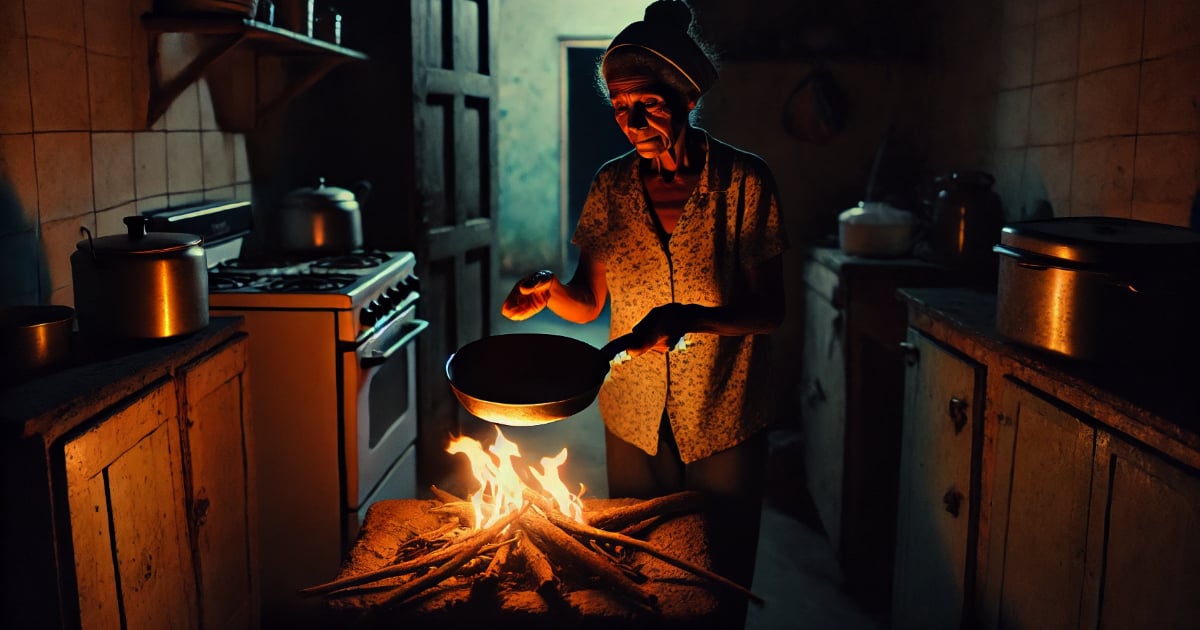On March 8, as the world observes International Women's Day, Cuba finds itself grappling with a severe energy crisis. The National Electric System (SEN) is once again revealing its vulnerabilities with a projected deficit of 1,469 MW during peak hours, leading to extended blackouts across most of the nation.
While the regime attempts to gloss over the day with empty rhetoric, Cuban women's daily reality is overshadowed by energy scarcity, collapsing infrastructure, and disproportionate burdens from the ongoing crisis. According to a report by the Unión Eléctrica (UNE), the country woke up to a mere 1,800 MW available against a demand of 2,085 MW, already resulting in a 338 MW shortfall.
By noon on this Saturday, the shortfall was expected to rise to 850 MW, with almost 1,500 MW anticipated during peak hours, surpassing the previous day's numbers. The unstable system could potentially see this figure increase further.
The Struggle of Cuban Women Amidst Energy Crisis
The technical report highlights that the country's main thermoelectric plants are operating with significant deficiencies. Units out of service due to failures include Unit 5 at CTE Nuevitas and Units 1 and 2 at CTE Felton, which suffered another unexpected boiler breakdown despite numerous repair attempts.
This is compounded by scheduled maintenance at several plants, such as CTE Mariel, CTE Santa Cruz, and CTE Cienfuegos. Severe thermal limitations and a lack of fuel have also left 47 distributed generation plants and three Melones barge engines inactive, impacting a total of 312 MW.
For many Cuban women, the energy crisis means more than just darkness and unbearable heat. It adds to their daily workload: cooking without electricity or gas, caring for the elderly and children under adverse conditions, and finding ways to sustain their families in a country where shortages and inflation strike mercilessly.
Despite official claims of gender equality, Cuban women bear the brunt of a crisis born from decades of mismanagement and state corruption. With unreliable electricity access, they face increasing hurdles in their professional, educational, and personal lives. As other countries make strides in women's rights and dignified conditions, Cuban women are left to navigate a failed system.
A Future Without Real Solutions
The Cuban regime continues to withhold structural solutions to the energy crisis, opting instead for technical excuses and blaming external factors, while failing to acknowledge its role in SEN's ongoing decline. A lack of infrastructure investment, outdated thermoelectric facilities, and reliance on fuel imports have plunged Cuba into an unending cycle of blackouts.
This March 8, Cuban women are not celebrating advancements or achievements. Instead, they acknowledge their resilience in a system that has doomed them to live in not just electrical, but economic and social darkness.
Understanding Cuba's Energy Crisis
What is causing the energy crisis in Cuba?
The energy crisis in Cuba is primarily caused by outdated infrastructure, a lack of investment in the power system, and a heavy reliance on imported fuels. This has led to frequent blackouts and an unstable electric grid.
How are Cuban women affected by the energy crisis?
Cuban women face additional challenges due to the energy crisis, such as managing household tasks without reliable electricity, caring for family members under difficult conditions, and dealing with the broader impacts of economic hardship.
